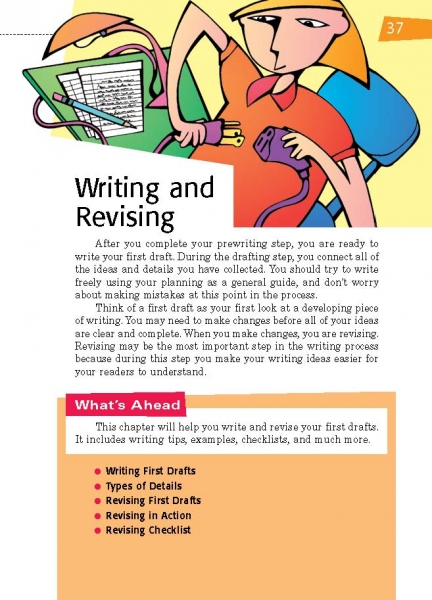Page 037 from

Start-Up Activity
Read the chapter-opening page aloud. Discuss the concept of drafting and revising writing. Ask if any students have written multiple drafts of a paper before. What sort of changes did they make from draft to draft and why? Also ask them if they have written just one draft of an assignment and turned it in. What were the results? Emphasize that a first draft is a trial run, and revising deals with making changes to improve the writing. You may want to review “Revising” in “One Writer’s Process” on page 12.
Think About It
“If you haven’t revised, you’re not finished.”
—Patricia T. O’Conner

Start-Up Activity
Read the chapter-opening page aloud. Discuss the concept of drafting and revising writing. Ask if any students have written multiple drafts of a paper before. What sort of changes did they make from draft to draft and why? Also ask them if they have written just one draft of an assignment and turned it in. What were the results? Emphasize that a first draft is a trial run, and revising deals with making changes to improve the writing. You may want to review “Revising” in “One Writer’s Process” on page 12.
Think About It
“If you haven’t revised, you’re not finished.”
—Patricia T. O’Conner





